Vapcell U2
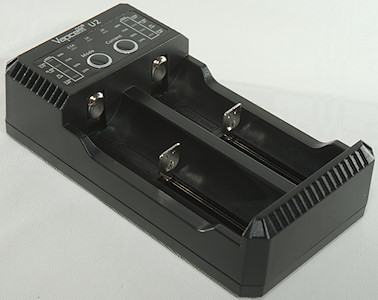
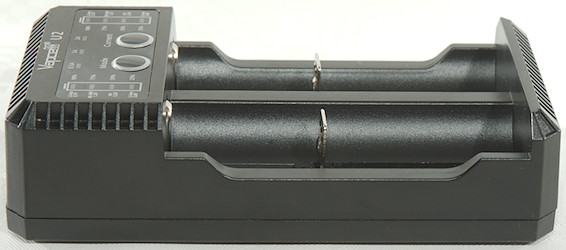
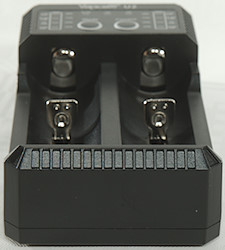
This is a universal charger from Vapcell, it can charger all battery sizes and the common chemistries. There is also a power bank output.
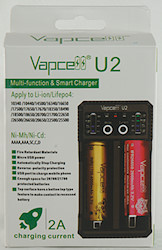

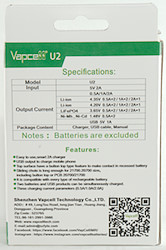

The charger arrived in a white cardboard box with specifications including a list of supported batteries.
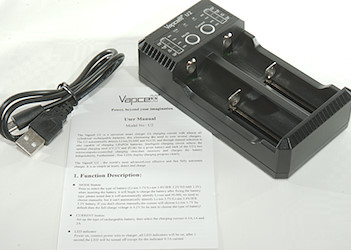
The box included the charger, a usb cable and a instruction sheet.

The charger is USB powered and has a power bank function.
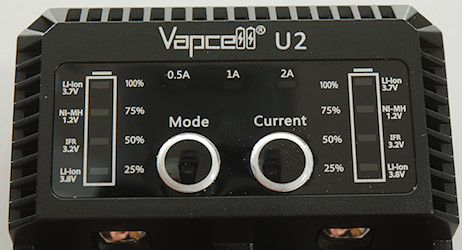
The user interface contains 2 buttons and a couple of leds.
The buttons can be used to select chemistry and current when putting batteries in the charger, but is locked during charge.
MODE: Select between 3.6V/3.2V, 4.2V/3.6 and 4.35V/3.8V charge voltage for LiIon.
CURRENT: Select between 0.5A, 1A and 2A for LiIon.
During charge a press on the MODE button will show the current chemistry.
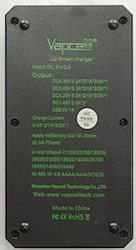
The back has the usual specifications, in a easy readable color.
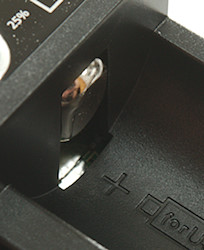
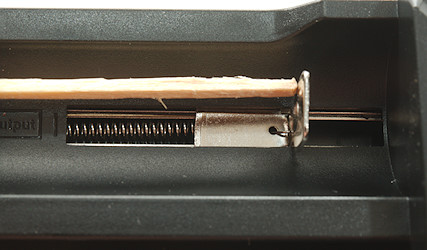
The connection are the common slider style that can handle from 33.5mm to 77mm, this handles all normal sizes of LiIon and NiMH cells, protected or not. Specified battery length is 34 to 75mm.


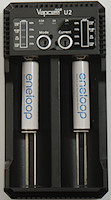
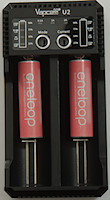
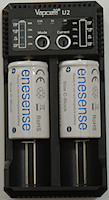
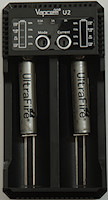
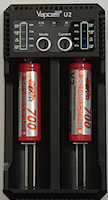
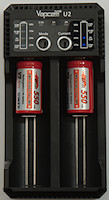
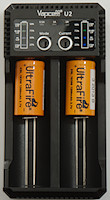
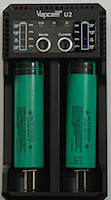
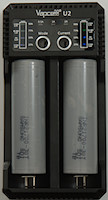
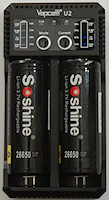
The charge current is on the high side for 10440 cells.
Measurements charger
Charging LiIon 4.2V
Charging LiIon 4.35
Charging LiFePO4 at 3.6V
Charging NiMH
USB out
- When not powered it will discharge a LiIon battery with about 1mA on USB channel and 0.03mA on the other.
- When powered the charge will charge with about 0.5mA when finished.
- With a shorted battery (i.e. 0V) the charger will report error by flashing the leds.
- Between 0.1V and 1.7V the battery is assumed to be NiMH.
- Above 2.0V the battery is assumed to be LiIon.
- 2A current can only be used on one slot.
- NiMH is always 0.5A charge current.
- Charger will not restart if battery voltage drops.
- Charger will restart if a nearly full battery in inserted or power cycled.
- USB output only works on slot #2 (It is clearly marked).
- Power consumption when idle is 33mA from USB.
Charging LiIon 4.2V
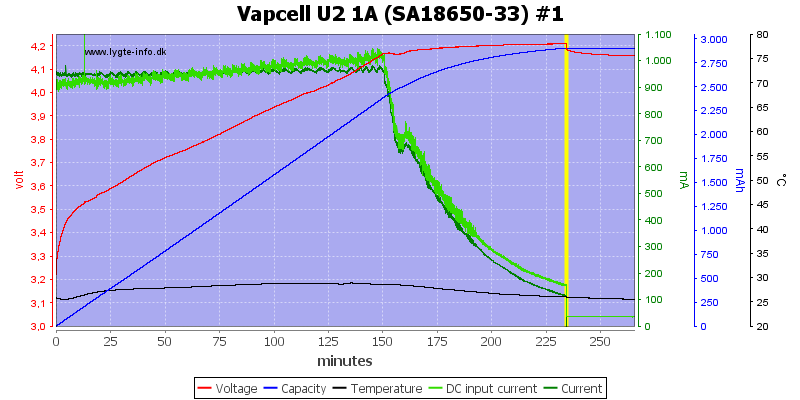
The charger uses a nice CC/CV charge profile for LiIon with a termination current around 110mA.
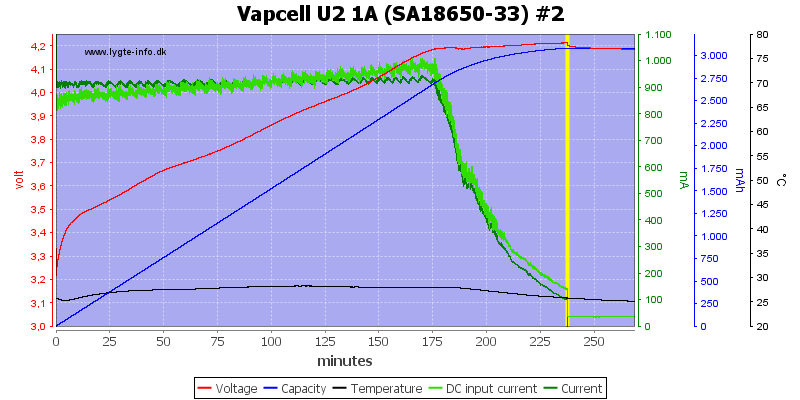
The second slot is similar.
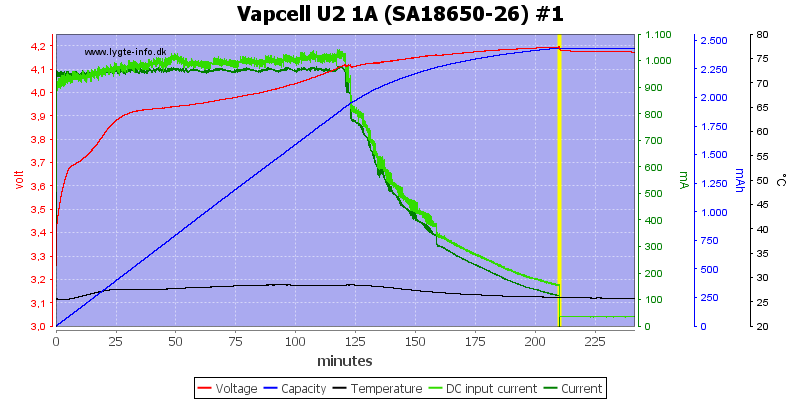
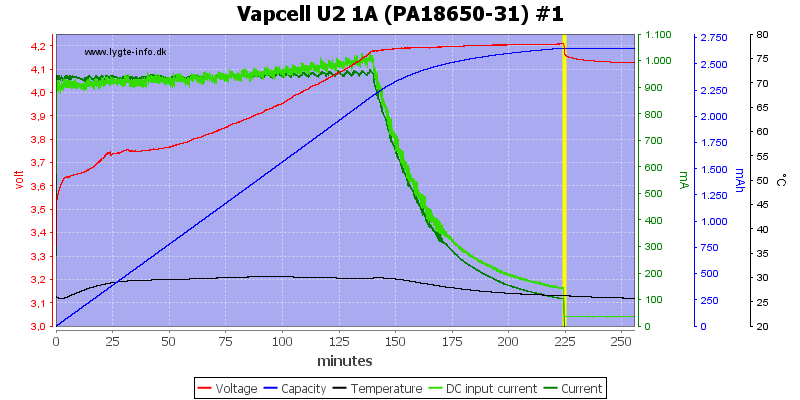
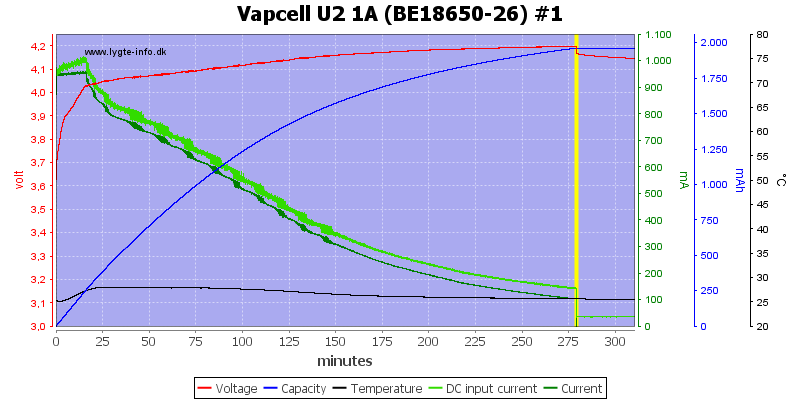
The 3 other batteries are also handled in a similar way.
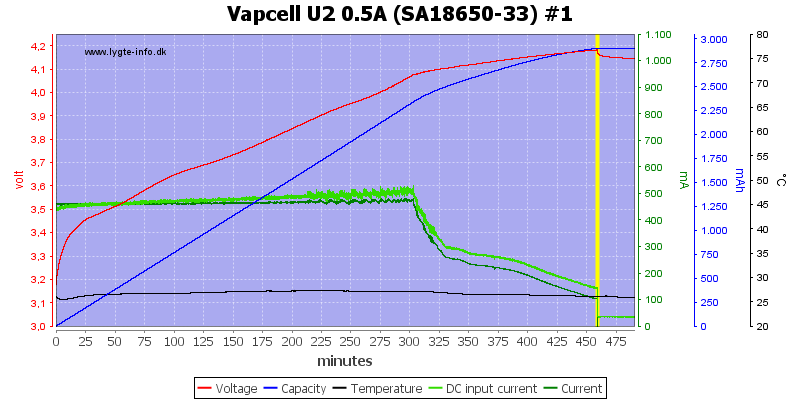
Using the low charge rate works fine.
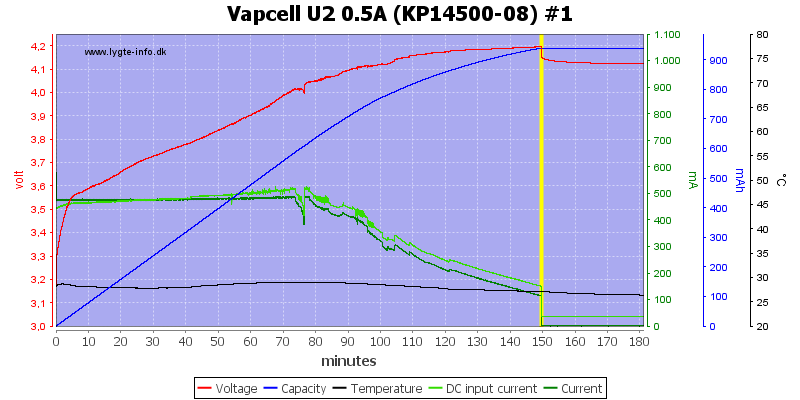
But with this cell there is a bump in the current (I did this two times and got a bump each time). The termination current is similar.
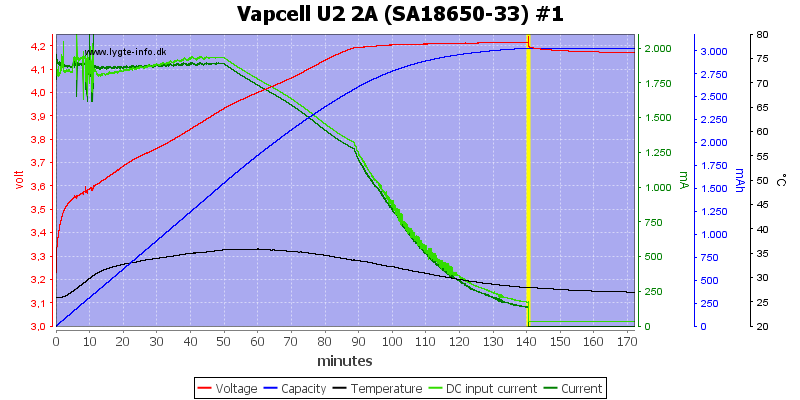
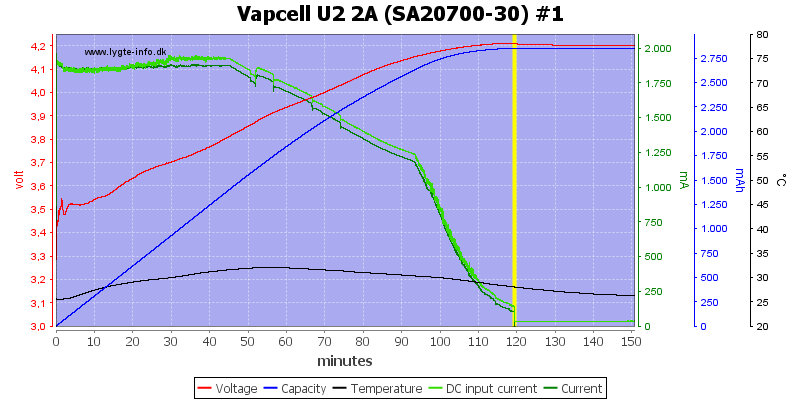
Charging a high current cell at 2A goes fairly fast.
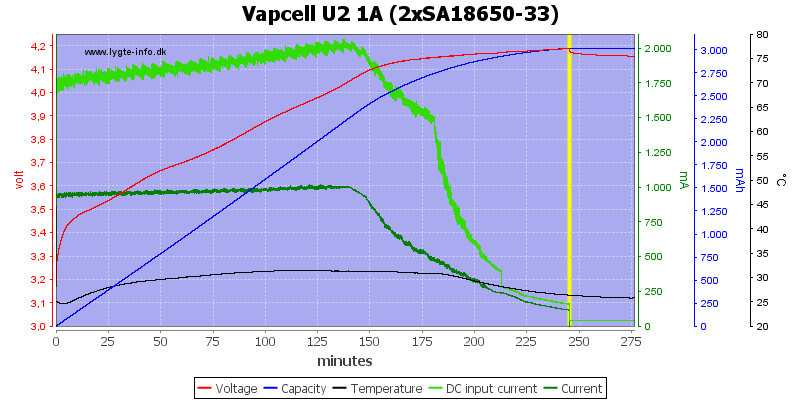
Charging two LiIon cells at 1A works fine.

Using a 0.5ohm resistor in series with the power supply to simulate a weak power supply or long cable slow down the charging. It also took some time before the charger settled on a slower charge rate. The end result is fine.
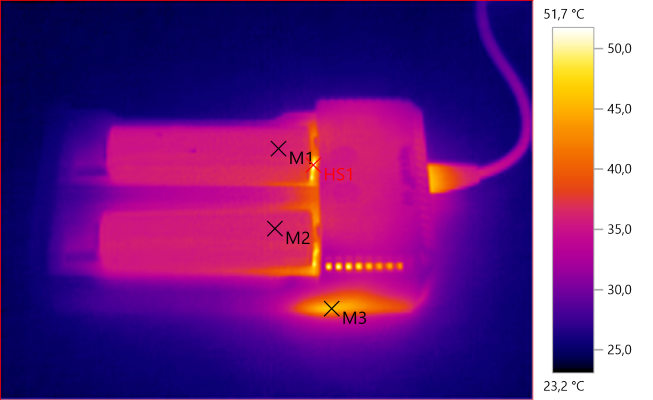
M1: 35.9°C, M2: 36.2°C, M3: 45.8°C, HS1: 51.7°C
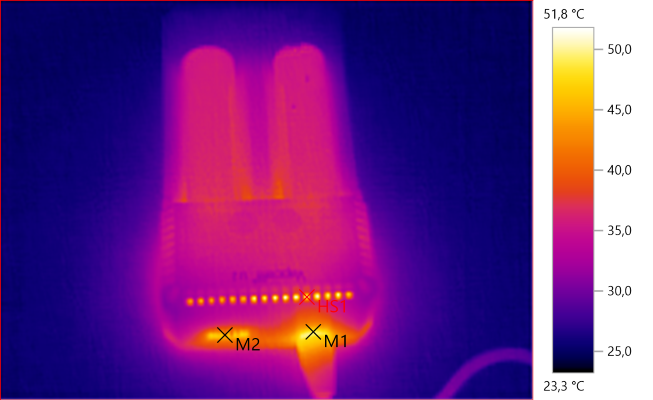
M1: 48.6°C, M2: 42.9°C, HS1: 51.8°C
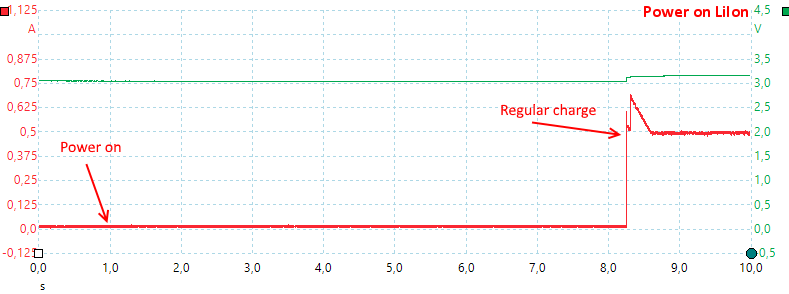
The charger needs about 7 seconds to turn on, partly because it waits for user input.
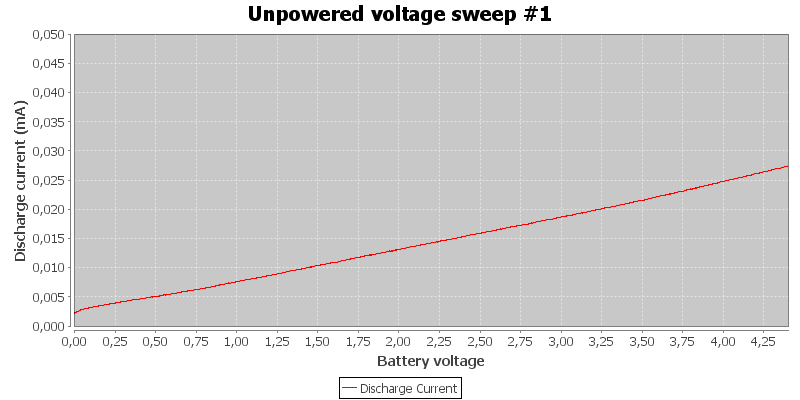
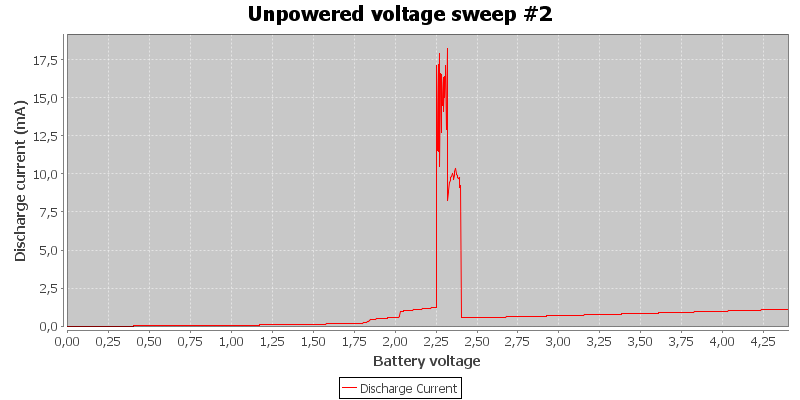
The charge only slot do not load the battery when the charger is unpowered, but the USB output will draw some power to maintain the 5V output.
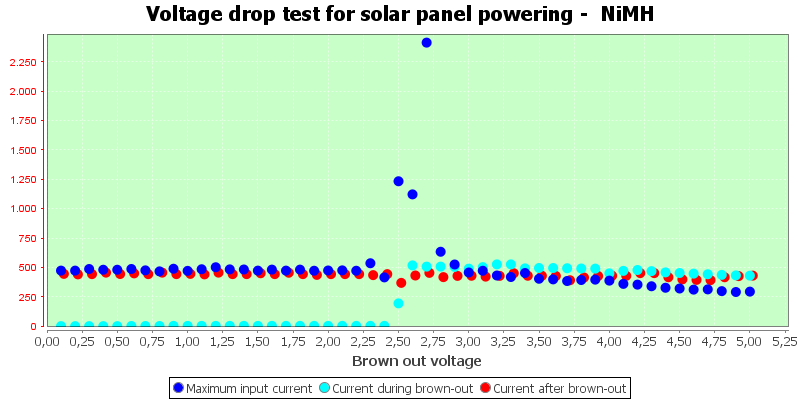
The charger can work with a unstable supply, but it had some problems controlling the current when the voltage increased again and the charger restarts.
Charging LiIon 4.35
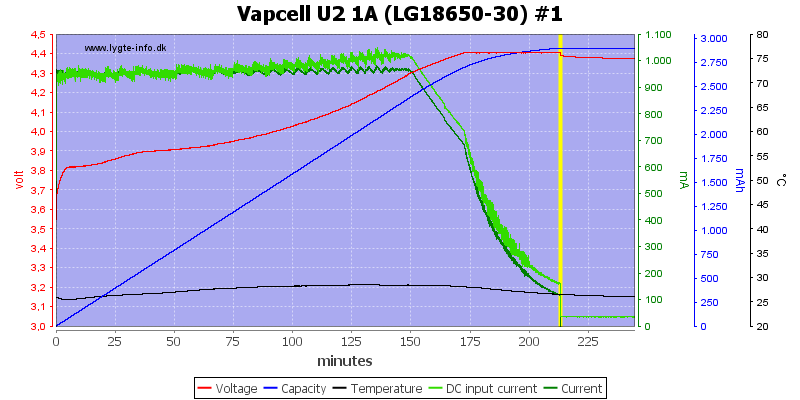
The 4.35V charge curve is similar to the 4.2V charge curve, except for the higher voltage, it uses 4.4V instead of 4.35V, this is at the limit of the allowable range.
Charging LiFePO4 at 3.6V
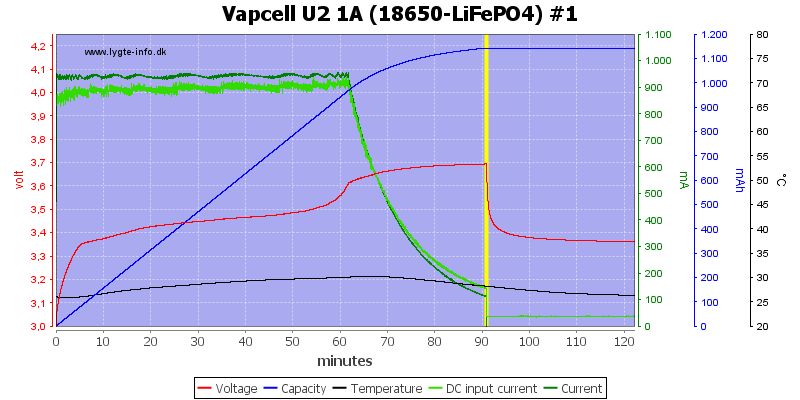
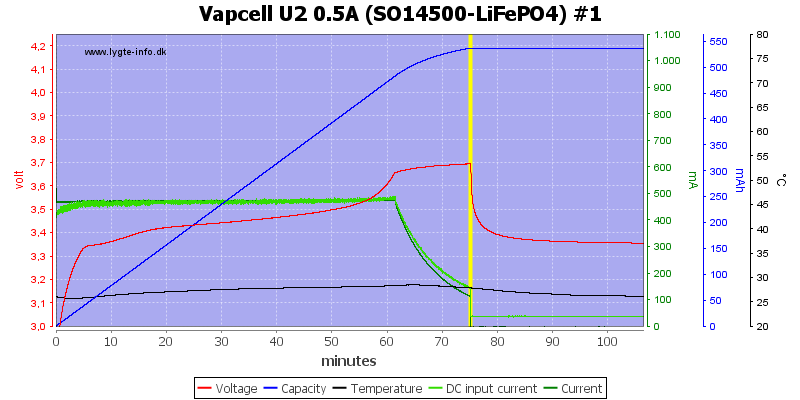
This charger works fine, but uses 3.7V (This is acceptable).
Charging NiMH
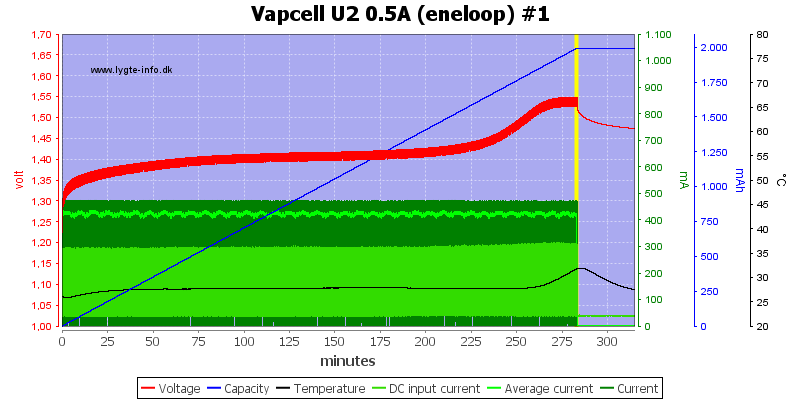
The NiMH charging uses the usually pulsing and the termination looks to be -dv/dt or 0dv/dt.
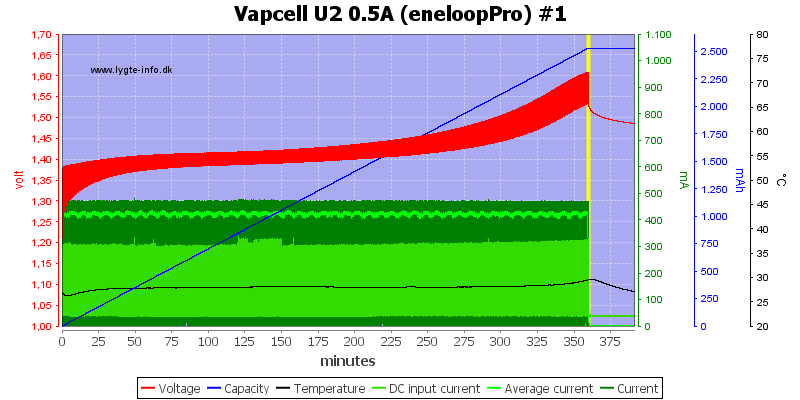
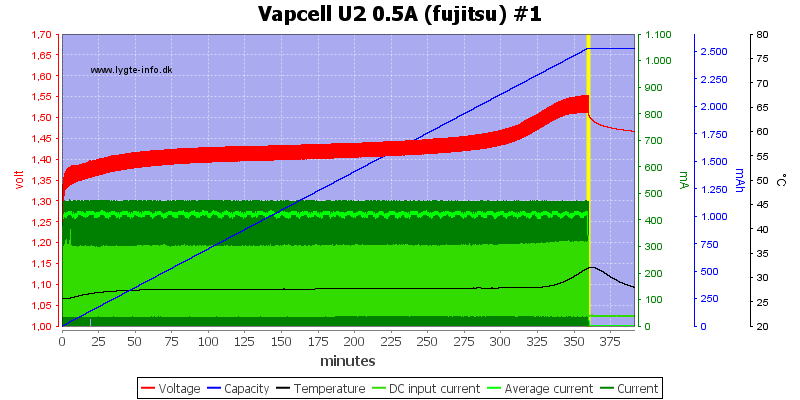
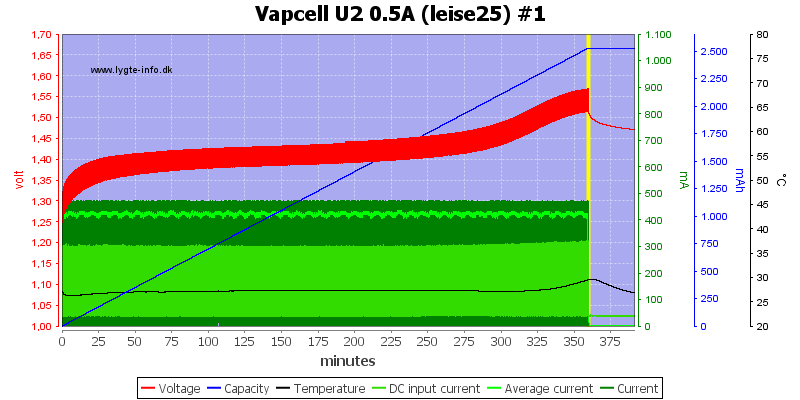
With the high capacity cells it looks more like voltage termination on two of them.
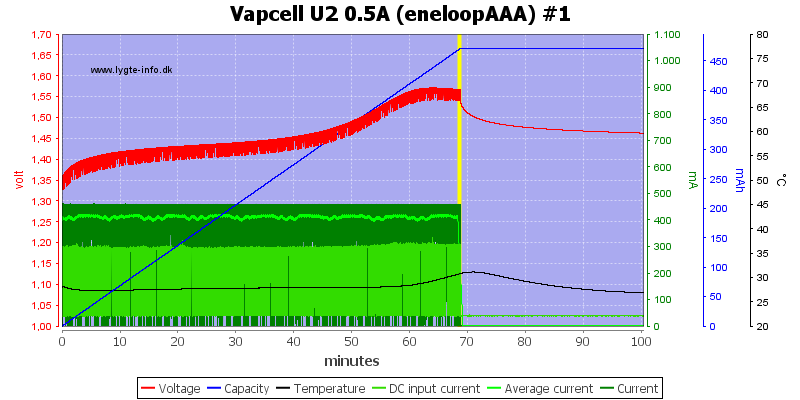
The AAA cells is definitely a -dv/dt termination, but something is wrong with my cell, the capacity is too low or it was not empty when I started (This is not a charger problem, the termination is perfect).
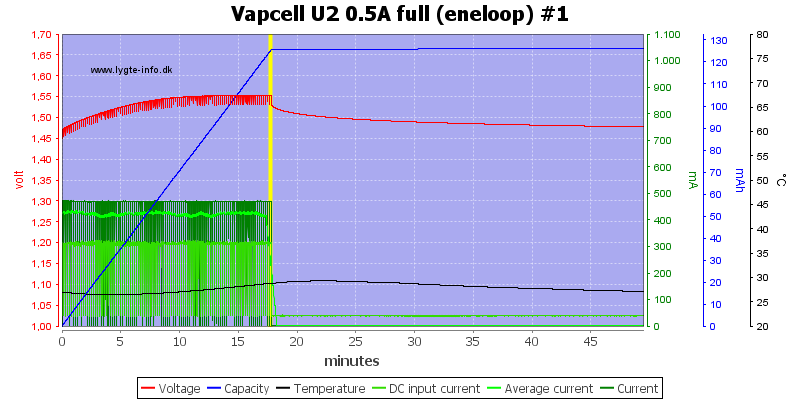
The charger is, as expected, a bit slow to termination on a full cell.
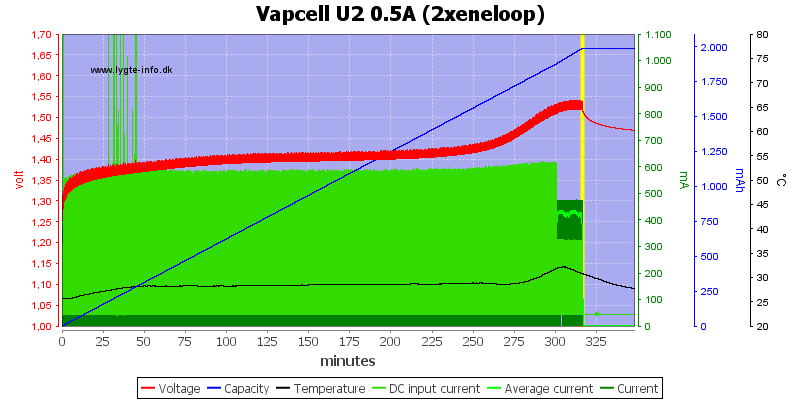
Two cell is handled as fast as one cell.
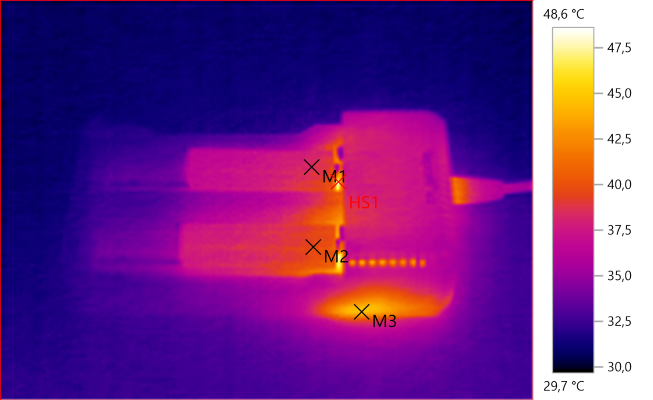
M1: 38.5°C, M2: 39.8°C, M3: 44.5°C, HS1: 48.6°C
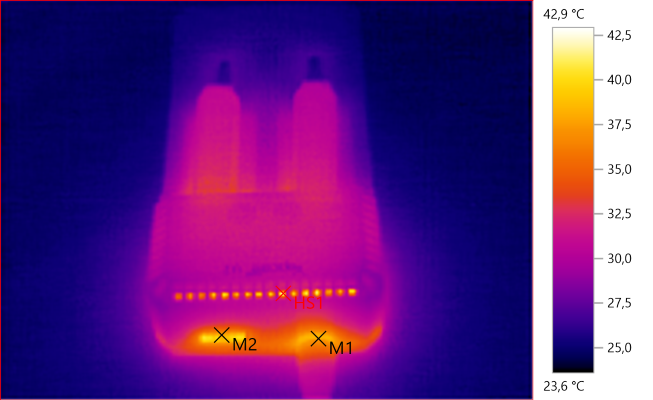
M1: 38.2°C, M2: 37.6°C, HS1: 42.9°C
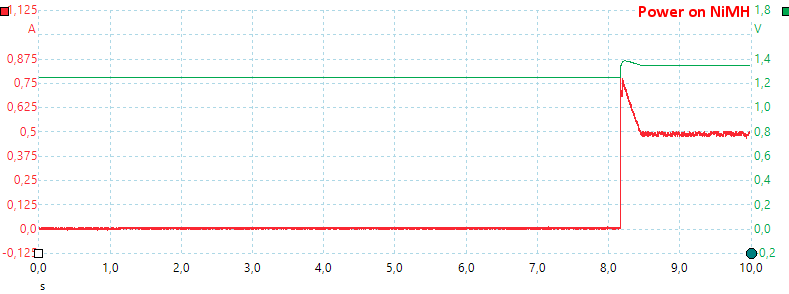
The charger uses the same start time for NiMH, but the user cannot change chemistry or current.
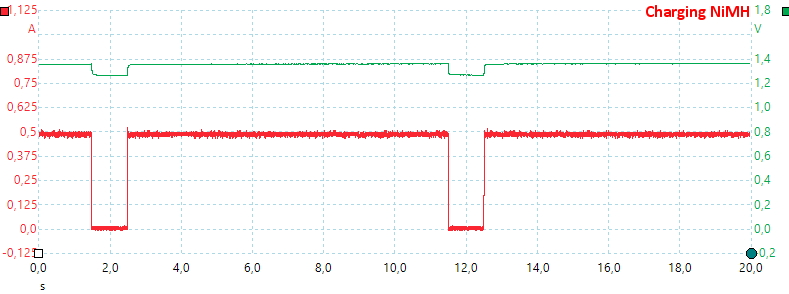
As usually the charger is pulsing the charge current.

NiMH also works with unstable supply and again the charger has a bit trouble with the current control during startup.
USB out
- When not powered it will discharge a LiIon battery with about 1mA.
- USB output do not turn off when unloaded.
- USB output is coded as DCP.
- USB output turns off when charger is powered.
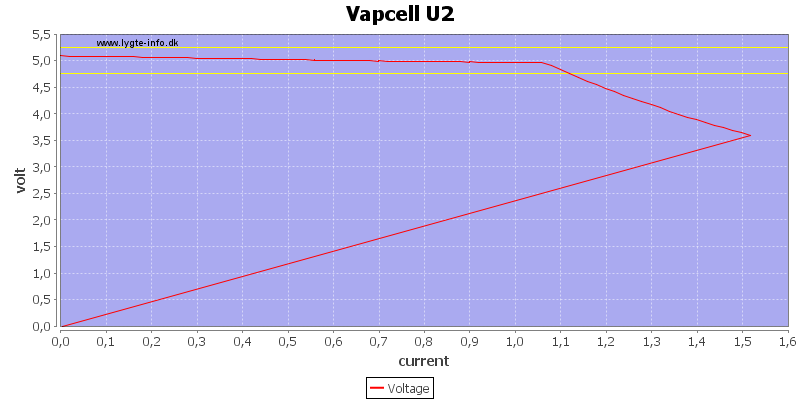
The USB output can deliver about 1A, before it will reduce the voltage, overload protection kicks first in at about 1.5A
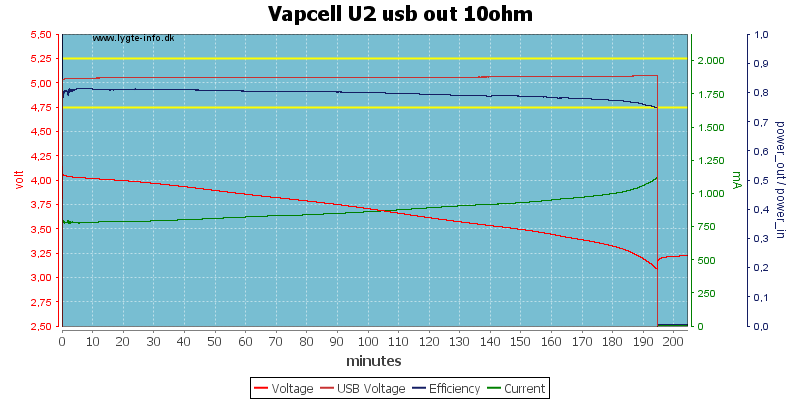
At 0.5A the output is stable until the charger turns current off due to empty battery. This happens at around 3V.
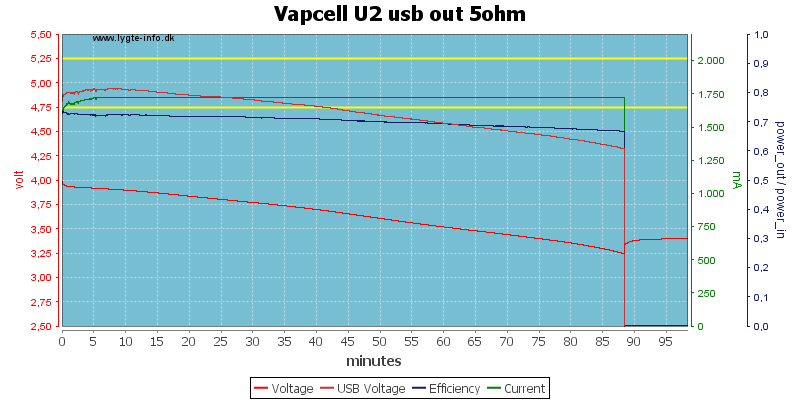
The boost converter is a bit on the weak side for a 1A output and cannot maintain output voltage with 1A current load when the battery voltage drops.

The noise is 6mV rms and 55mVpp with a 10ohm load.

The noise is 11mV rms and 90mVpp with a 5ohm load, but values are very low.
Conclusion
The charger is a fairly simple model, but it can handle a wide variety of battery types and sizes and mostly it looks good. The 4.35V charge is slightly on the high side and during my test the second charge channel (USB output channel) died, maybe because I was a bit hard on the USB output (USB output did not die).
The power bank function is a bit weak, it has trouble maintaining 5V during the full time when drawing 1A
As a final rating I will call it fairly good.
Notes
The charger was supplied by a Vapcell for review.
Here is an explanation on how I did the above charge curves: How do I test a charger





























































